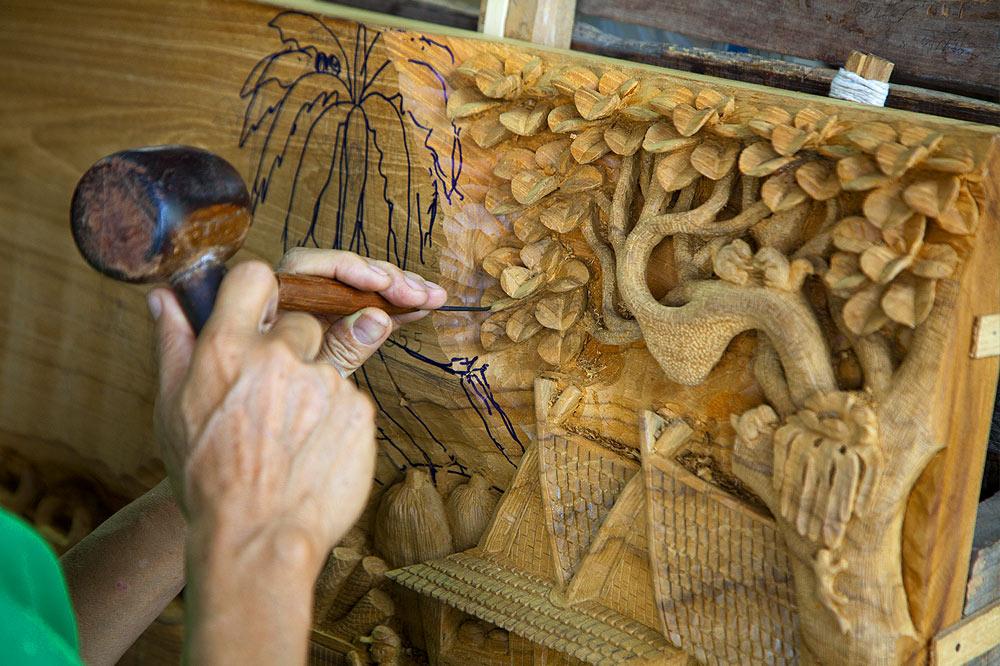Wood Carving
This art form in Thailand originated from the temples where religious objects such as Buddha images and pulpits were finely carved. Royal regalia for the court and household objects used by the nobility were also decorated with carvings. In temple buildings, the doors, shutters, gables and triangular brackets supporting the overhanging roofs were often intricately carved with animal and plant motifs. Some of the best examples of carvings in Chiang Mai are at Wat Duang Di, Wat Saen Fang and Wat Inthrawat (Wat Ton Khwen).
Nowadays craftsmen specialize in just one type of carving used in the decoration of a viharn. The modern woodcarving industry itself is a development of only the last few decades.
Traditionally only a few artifacts were commissioned, and the wooden elephant was the most common everyday carved object. The popularity of temple carvings imported from Burma as souvenirs encouraged dealers to get local craftsmen to reproduce them. The reproduction processes, which include aging methods such as burning and soaking in urine, have become so good that even experts have difficulty deciding whether an object is genuinely old

This monk was a celebrated woodcarver who produced works in the traditional Lanna style. He specialized in the designs of door and window panels. The quality of the execution of the work depended on the hand of the craftsmen who actually did the carving. Examples of his work may be seen in the main viharn at Wat Buppharam, the scripture library at Wat Rampoeng and the chedi of Wat Phra Bat Tak Pho. He also did stucco work, the best example of which is seen at the ubosot which sits above the viharn of Wat Phan On.

The scarcity of teak has forced modern carvers to use other woods like that of the rain tree. These woods carve well and are inexpensive. Staining to hide the light colors of the woods has become more common. The carving itself is usually done in the rough in outlying villages near Mae Tha, before the pieces are sent for detailed work in the woodcarving center of Ban Tawai.



































